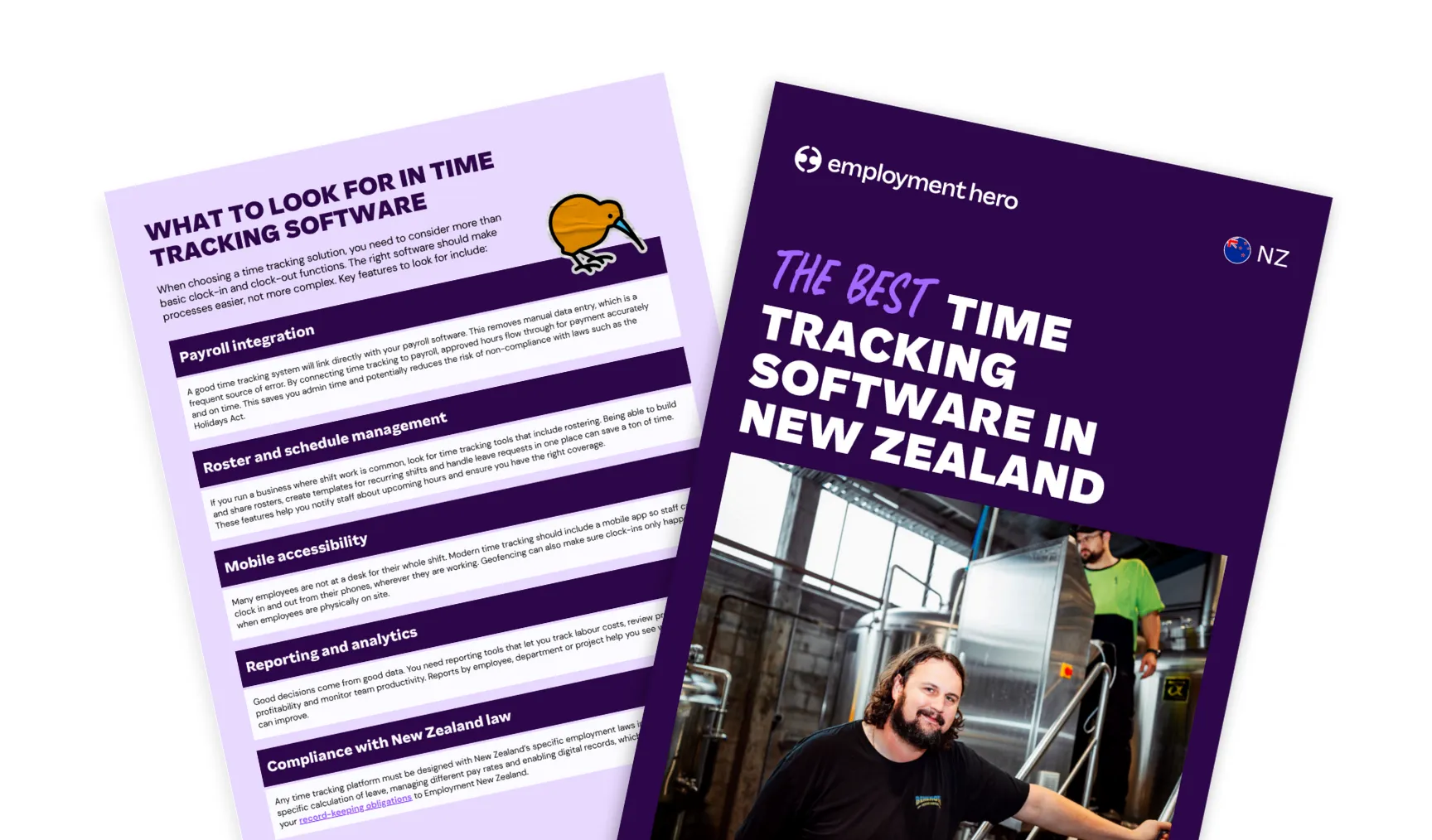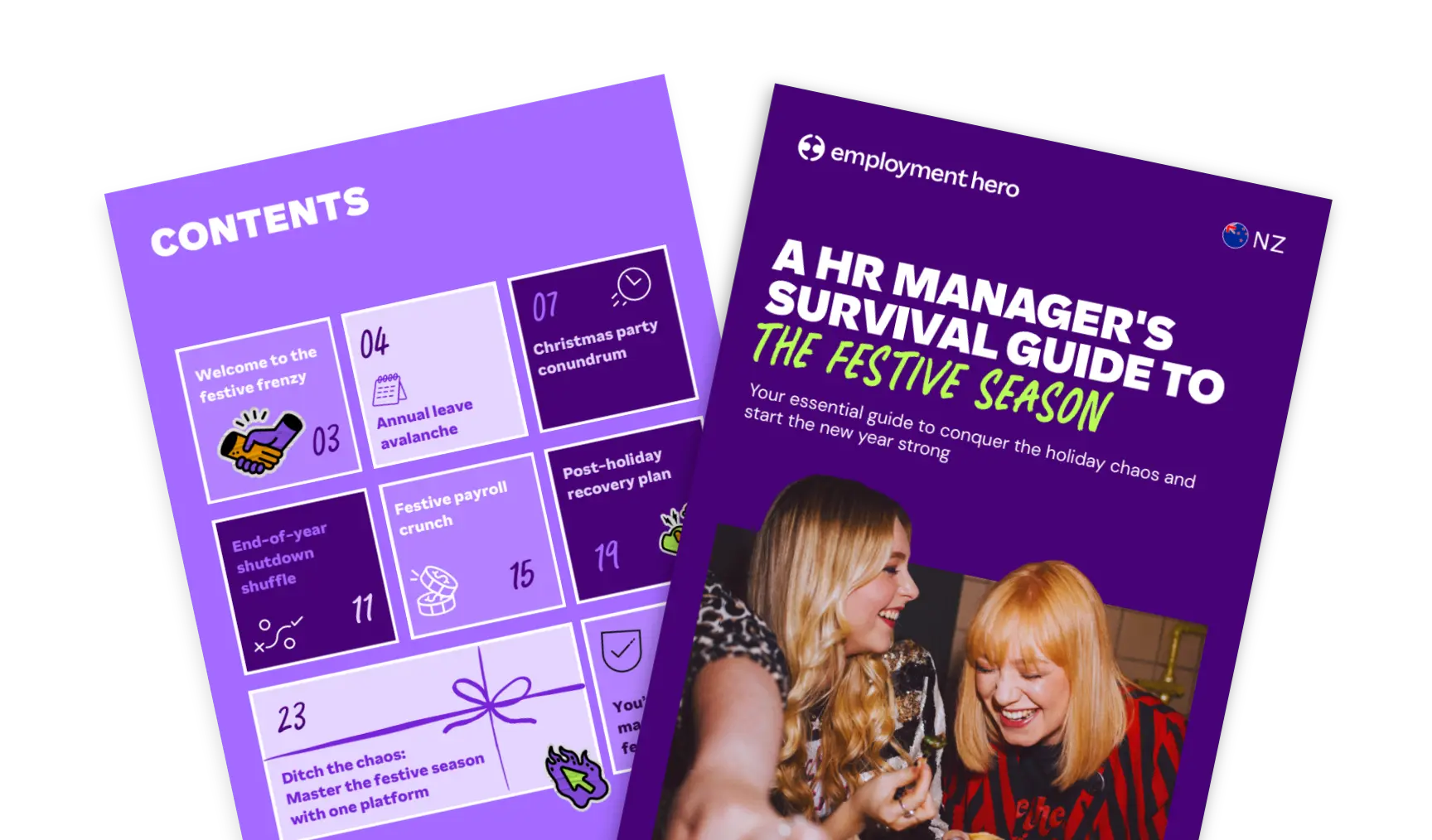An employer’s guide to personal grievance and unjustified dismissal claims
Published
An employer’s guide to personal grievance and unjustified dismissal claims
1 min read
A strong employment relationship is one where both an employer and employee feel respected and understand their roles. The sad reality is that there are times where an employment relationship could break down, leading to significant issues and potential legal action.
It’s important that employers are aware of how the personal grievance process works. While ideally their employment relationships should be healthy and happy, they may come up against a claim at some point. It’s also crucial that employers are aware of specific actions that could open them up to a personal grievance, so they know to avoid them.
Our factsheet includes:
- The essentials of an employment relationship
- Personal grievance complaints
- Unjustified dismissal claims
- Unjustified disadvantage claims
- The personal grievance process
What is a personal grievance claim?
At the centre of a personal grievance claim is the assertion that the terms of an employment relationship has been broken in some way. This isn’t just about the number of hours given or monthly pay – it extends to how employers interact and treat their employees on a day-to-day basis.
All employers are expected to stick to a code of conduct that includes following fair process and not behaving in an unfair or unreasonable manner, and can find themselves legally vulnerable if they fail to comply.
Currently employees can bring a personal grievance for the following listed complaints:
- Unjustified dismissal (unless the dismissal took place during the employee’s 90-day trial period)
- Unjustifiable action which disadvantages the employee
- Discrimination (the full list of prohibited grounds of discrimination are listed in the Human Rights Act 1993)
- Sexual harassment
- Racial harassment
- Duress over membership of a union or other employee organisation
- The employee not meeting legal requirements according to the employee’s employment conditions
- Unfair treatment of an employee who has lawfully refused work in certain circumstances
- Health and safety retaliation by an employer, because of a health and safety dispute
- Retaliation against a current or former employee who has made a protected disclosure of information
- When an employer does not agree to protect an employee’s employment in participating in Reserve Forces service or training
- When an employer compels a shop employee to work on Easter Sunday or treats them adversely because they have refused to work on Easter Sunday
The key steps of the personal grievance process with the Employment Relations Authority
Employees must first raise a personal grievance within 90 days of when the personal grievance arose or came to the employee’s attention.
The exception is for sexual harassment claims. For any incidences of sexual harassment that happens on or after 13 June 2023, employees have 12 months to raise a grievance about sexual harassment.
When starting the process, Employment New Zealand advises employees to first raise their issue informally with their employer, and then request mediation. Both these steps are optional if the employee doesn’t feel comfortable doing so.
The next step for the employee is in making a formal claim with the Employment Relations Authority (ERA). The ERA will investigate the issue, establish as many facts as they can, and reach a final determination. Statements are collected from both the employee and the employer.
Late claims: The exceptional circumstances behind them
If an employer agrees, an employee may file a personal grievance against a current or previous employer after the 90-day or 12-month time limit.
If an employer does not agree, the employee can request that the Employment Relations Authority (ERA) decide whether they can still raise the grievance. This is possible only if they can demonstrate that the delay was due to exceptional circumstances.
Examples of these circumstances include:
- The employee’s representative failed to file the grievance on time.
- Health issues caused by the problem prevented the employee from raising the grievance.
- The employee’s employment agreement did not explain the available services for resolving issues or did not mention the 90-day notification period.
- Their employer did not provide a reason for dismissal when asked.
Our guide will take you through the whole process
Even if you’re going through tough times, managing employment effectively is crucial for a functioning business. Our guide will support you in taking the right steps for yourself and your business, even when they’re difficult ones.
Download the guide today.
Disclaimer: The information in this factsheet is relevant as at 23 April 2024, and has been prepared by Employment Hero Pty Ltd ABN (11 160 047 709) (Employment Hero). The views expressed herein are general information only and are provided in good faith to assist employers and their employees. The Information is based on data supplied by third parties. While such data is believed to be accurate, it has not been independently verified and no warranties are given that it is complete, accurate, up to date or fit for the purpose for which it is required. Employment Hero does not accept responsibility for any inaccuracy in such data and is not liable for any loss or damages arising either directly or indirectly as a result of reliance on, use of or inability to use any information provided in this factsheet.
Register for the factsheet
Related Resources
-
 Read more: Best time tracking software for NZ businesses
Read more: Best time tracking software for NZ businessesBest time tracking software for NZ businesses
Discover the best time tracking software for NZ businesses. Compare tools, find the right fit, and make time tracking simple…
-
 Read more: HR Managers: Don’t just survive the festive season, master it
Read more: HR Managers: Don’t just survive the festive season, master itHR Managers: Don’t just survive the festive season, master it
Make year-end easier: manage leave, payroll, parties and shutdowns with confidence. Get practical tips for NZ SMEs. Download the free…
-
 Read more: Outsourcing payroll in New Zealand: Guide for employers
Read more: Outsourcing payroll in New Zealand: Guide for employersOutsourcing payroll in New Zealand: Guide for employers
Learn how payroll outsourcing works in NZ, its benefits and risks, and how Employment Hero NZ makes it simpler and…





















